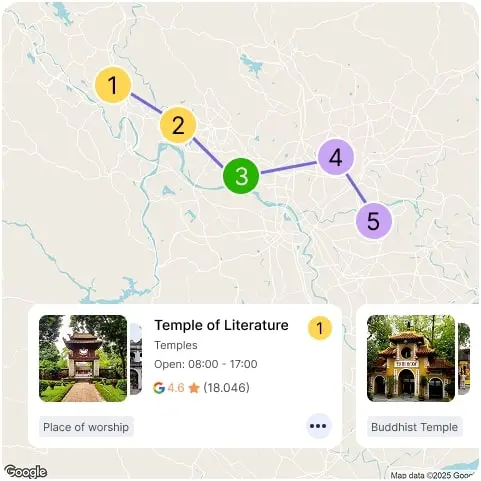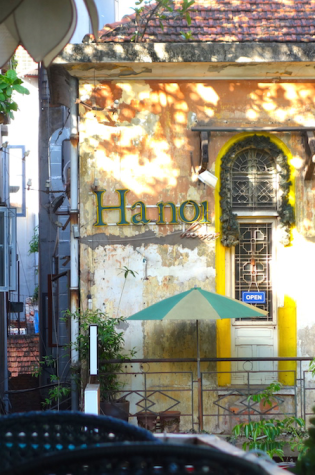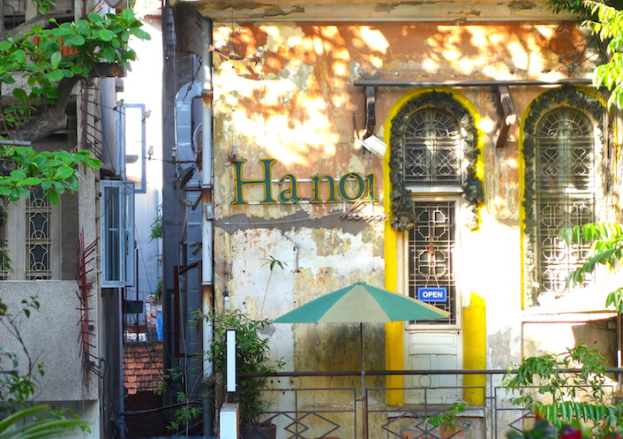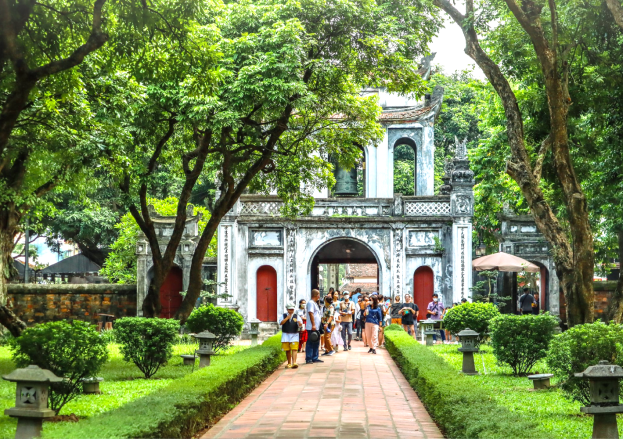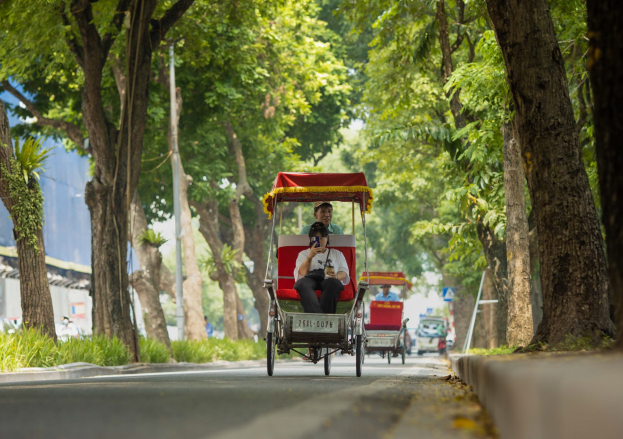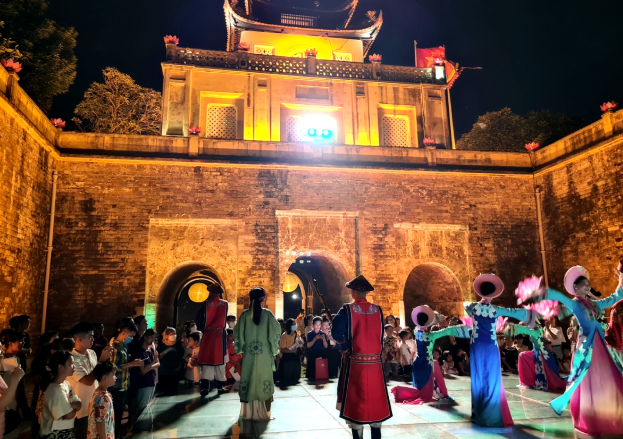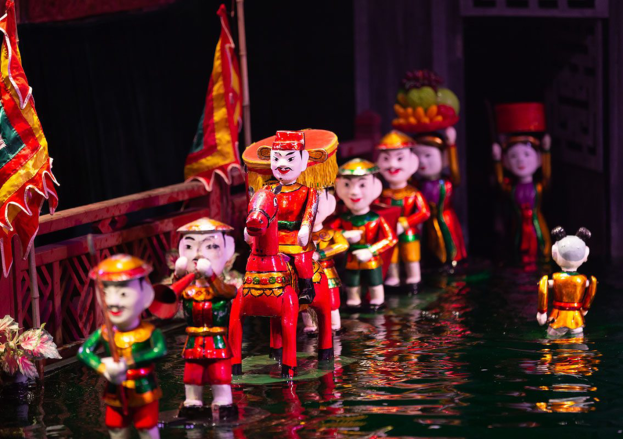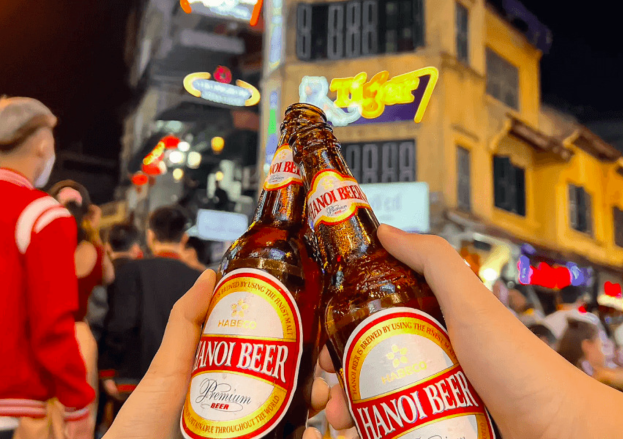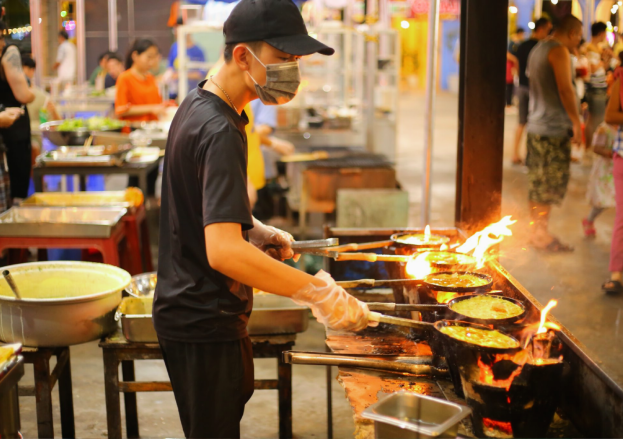
Food Markets
Explore Vietnam’s vibrant food markets, where sights, sounds, and aromas create an unforgettable experience. From fresh produce and aromatic spices to local snacks and street delicacies, these markets offer an authentic glimpse into daily life and Vietnamese culinary culture.
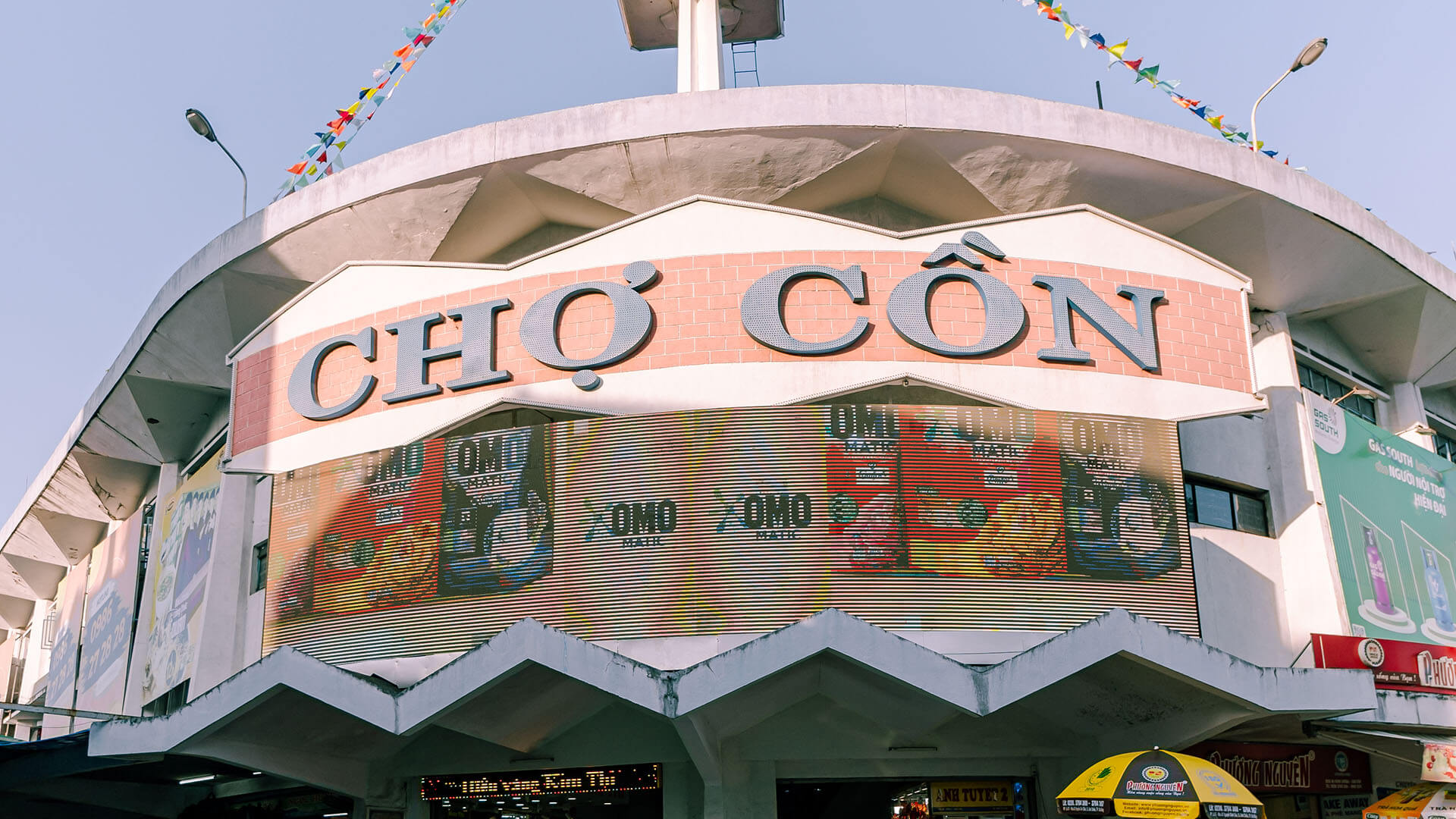
Top foods to try at Con Market, Da Nang
05 Sep, 2025
Sizzling Pancake ("Bánh Xèo") Sizzling pancake is a crispy, savory pancake filled with shrimp, pork, and bean sprouts, often accompanied by fresh herbs and lettuce for wrapping. The pancakes are pan-fried to perfection, creating a delicate crunch with every bite. At Con Market, you can watch vendors skillfully pour the rice batter onto hot pans and flip it with precision, making the cooking process almost as enjoyable as the tasting. Tip: Dip the sizzling pancake in the traditional fish sauce with a touch of lime and chili to enhance its flavor. Fish Cake Noodle Soup ("Bún Chả Cá") A specialty of central Vietnam, fish cake noodle soup features fish cakes served over vermicelli noodles in a flavorful broth. At Con Market, the soup is often garnished with fresh herbs, sliced chilies, and a hint of turmeric, which gives it a beautiful golden color. The combination of tender fish cakes and aromatic broth makes it a comforting dish perfect for breakfast or lunch. Tip: Pair it with a side of fried tofu or spring rolls for a more filling meal. Grilled Pork Skewers ("Nem Lụi") Grilled pork skewers are a street-food favorite that you’ll find at Con Market. Ground pork is seasoned with lemongrass and spices, then grilled on bamboo skewers over an open flame. Served with rice paper, fresh herbs, and a tangy dipping sauce, grilled pork skewers allow diners to create their own flavorful rolls, making it both fun and delicious. Tip: Roll it with lettuce, mint, and cucumber slices for a refreshing bite. Quang-Style Noodles ("Mì Quảng") Originating from Quang Nam province, just outside Da Nang, Quang-style noodles feature turmeric yellow noodles, a small amount of flavorful broth, pork, shrimp, quail eggs, and fresh herbs. The dish is topped with crushed peanuts and crispy rice crackers, giving it a satisfying crunch. Con Market has several vendors specializing in Quang-style noodles, each with its unique twist on this traditional dish. Tip: Don’t forget to mix all the ingredients thoroughly before eating to enjoy the full range of flavors. Vietnamese Baguette Sandwich ("Bánh Mì") Vietnamese baguette sandwiches at Con Market are a testament to the fusion of French and Vietnamese cuisine. Crispy baguettes are filled with savory ingredients such as pate, grilled meats, pickled vegetables, and fresh herbs. Each bite offers a perfect balance of textures and flavors. For those on the go, Vietnamese baguette sandwiches are a convenient and satisfying snack. Tip: Try the local grilled pork or chicken versions for a true Da Nang experience. Sweet Dessert Soup ("Chè") To end your culinary adventure on a sweet note, try one of the many varieties of sweet dessert soup available at Con Market. These traditional dessert soups come in countless combinations, including beans, jellies, coconut milk, and fruit. They’re not only delicious but also refreshing, especially during Da Nang’s warm weather. Tip: Opt for mixed sweet soup ("chè thập cẩm") to sample a variety of textures and flavors in one cup. Fresh Seafood Being a coastal city, Da Nang offers an abundance of fresh seafood, and Con Market is no exception. From shrimp and crab to clams and squid, many stalls allow you to select your seafood and have it cooked on the spot. It’s a perfect way to enjoy the freshest flavors of the sea. Tip: Ask for grilled or stir-fried preparations with local herbs and spices for an authentic taste. Visiting Tips Timing: Arrive in the morning or around lunchtime for the freshest food and to see the market at its liveliest. Cash: Most vendors accept only cash, so bring small bills. Exploration: Don’t stick to one stall—walking around and sampling from different vendors is the best way to experience Con Market fully. Con Market ("Chợ Cồn") is more than just a shopping destination—it’s a culinary hub where Da Nang’s flavors come alive. From sizzling pancake ("bánh xèo") and fish cake noodle soup ("bún chả cá") to sweet dessert soup ("chè") and fresh seafood ("hải sản tươi"), every corner offers a new taste adventure. Whether you’re a foodie or a curious traveler, visiting Con Market guarantees an authentic and unforgettable gastronomic experience in Da Nang.
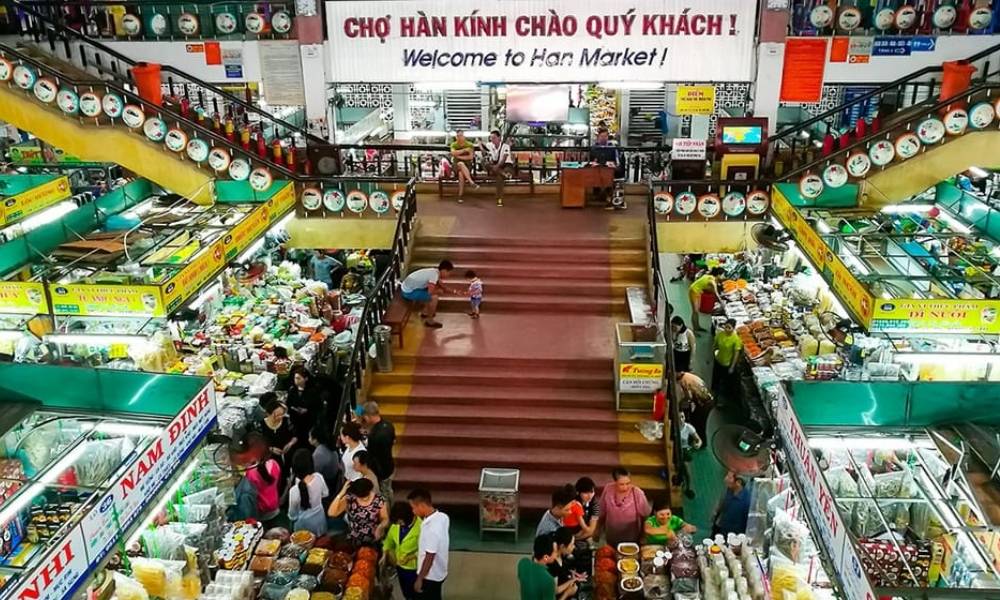
Taste the flavors of Da Nang at Han Market
05 Sep, 2025
A Market at the Heart of Da Nang Located in the city center, just a short walk from the Han River, Han Market has been a bustling hub of trade and community life since the 1940s. It’s not just a shopping spot—it’s a cultural experience where locals and visitors mingle among stalls overflowing with fresh produce, seafood, spices, and street food delights. The market’s lively atmosphere, combined with the aroma of sizzling dishes, immediately draws you in. Fresh Ingredients and Local Specialties As you stroll through the market, the first thing that catches your eye is the sheer variety of fresh ingredients. From glistening fish brought in from the coast that very morning, to fragrant herbs like lemongrass, basil, and Vietnamese coriander, everything is vibrant and full of life. But Han Market isn’t just about raw ingredients - it’s also where you’ll find some of Da Nang’s most beloved specialties. Vendors here are known for their ready-to-eat dishes that showcase the best of Central Vietnamese cuisine. Some must-try treats include: Mi Quang (Quang-style noodles): A hearty noodle dish with turmeric-infused broth, topped with pork, shrimp, and crunchy rice crackers. Banh Xeo: Crispy Vietnamese pancakes stuffed with shrimp, pork, and bean sprouts, served with fresh herbs and dipping sauce. Nem Lui: Fragrant grilled pork skewers, often eaten with rice paper, herbs, and peanut dipping sauce. Seafood delights: From grilled squid to clams cooked in lemongrass, the seafood at Han Market reflects Da Nang’s coastal bounty. Sweet Treats and Local Snacks Han Market also tempts visitors with its colorful array of sweets and snacks. Sticky rice cakes, sesame candies, and dried fruits are popular with both locals and tourists. Don’t forget to try banh khot, mini savory pancakes with a crispy shell and soft inside, often topped with shrimp. These little bites perfectly capture the market’s fun and communal dining spirit. Beyond the flavors, Han Market offers a full sensory experience. The calls of vendors, the chatter of shoppers bargaining for the day’s best catch, and the sizzling sounds of woks create a vibrant soundtrack. Meanwhile, the mix of aromas—from savory broths to sweet coconut desserts—constantly entices you to try just one more dish. Tips for Visiting Han Market Go early: The market is busiest in the morning, when fresh ingredients are at their best. Bring cash: Most vendors prefer cash payments. Be adventurous: Don’t hesitate to try something unfamiliar—local street food is often the highlight of the visit. Shop for souvenirs: Besides food, Han Market is also known for selling dried seafood, coffee, tea, and handicrafts—perfect to take home. Han Market isn’t just about eating; it’s about experiencing Da Nang through its people, traditions, and flavors. Each stall tells a story—of fishermen returning with the day’s catch, of families perfecting recipes handed down through generations, and of the city’s proud culinary identity. For travelers eager to taste the true essence of Da Nang, Han Market is more than a stop—it’s a journey through the city’s flavors, history, and heart.
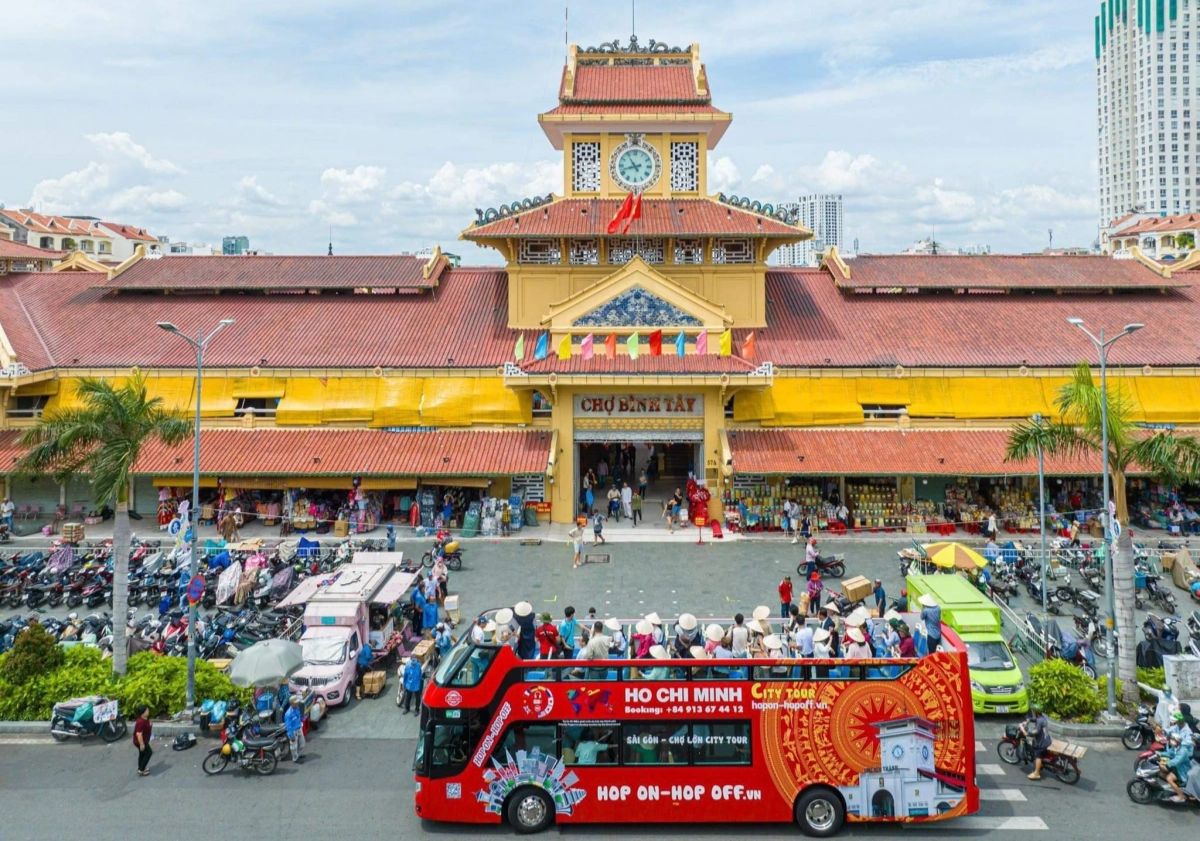
Must-visit stalls and eats at Chinatown (Cho Lon)
05 Sep, 2025
Overview of Cho Lon Cho Lon, known as the Chinatown of Ho Chi Minh City, is the largest Chinatown in Vietnam and one of the most vibrant cultural districts in the country. Stretching across District 5 and District 6, Cho Lon is not just a market but a whole neighborhood filled with bustling streets, ancient temples, and hundreds of food stalls. The heart of Cho Lon is Binh Tay Market, located at 57 Thap Muoi Street, Ward 2, District 6, which serves as the main hub for both trade and daily activities. Most shops and stalls here open from 6:00 AM until late in the evening, with food stalls becoming particularly lively during breakfast and dinner times. The history of Cho Lon dates back to the late 18th century, when Chinese immigrants, mainly from Guangdong and Fujian provinces, settled in the area. Over the centuries, it has grown into a melting pot of Chinese–Vietnamese culture, where traditions, architecture, and cuisine blend seamlessly. Today, Cho Lon stands as a must-visit destination for travelers seeking to immerse themselves in the vibrant daily life of the local community, shop for traditional goods, and indulge in the diverse and flavorful street food that has made this district so famous. What to Eat at Cho Lon Food is undoubtedly the soul of Cho Lon, and to truly understand the neighborhood, you need to taste it. As you wander through its lively alleys, the aroma of sizzling woks, simmering soups, and freshly steamed buns fills the air, luring you from one food stall to another. Each corner of Cho Lon reveals a new culinary discovery, a dish that tells the story of how Chinese and Vietnamese traditions have intertwined for centuries. One of the highlights is dim sum (“Dimsum”), with carts overflowing with delicate shrimp dumplings (“Há cảo tôm”), siu mai (“Xíu mại”), and soft buns (“Bánh bao”) steaming in bamboo baskets. These small bites are best enjoyed with a pot of hot tea, echoing the Cantonese dining tradition that thrives here. Another local favorite is hủ tiếu sa tế (“Hủ tiếu sa tế”), a noodle soup with a rich satay broth that delivers a comforting warmth with every spoonful. For those who prefer something bold and hearty, phá lấu (“Phá lấu”)—braised offal cooked in fragrant coconut milk—offers a savory taste unlike anything else, especially when eaten with crusty bread or vermicelli. If you crave something lighter, wonton soup (“Sủi cảo”) is a must. The wontons, filled with minced pork and shrimp, float in a clear broth that’s both delicate and flavorful. Meat lovers should not miss char siu rice (“Cơm xá xíu”), where slices of roasted pork with a glossy sweet-savory glaze are served atop a bed of fragrant rice, often accompanied by pickled vegetables for balance. Similarly, steamed buns (“Bánh bao”) filled with pork, quail eggs, and Chinese sausage make for the perfect on-the-go snack. Noodle enthusiasts will be drawn to braised duck noodles (“Mì vịt tiềm”), a dish of egg noodles paired with braised duck simmered in a medicinal herbal broth. The combination is both aromatic and nourishing, a dish that embodies the harmony of flavor and health in Chinese cuisine. For dessert, nothing beats Chinese-style sweet soups (“Chè Hoa”), which range from silky black sesame soup (“Chè mè đen”) to refreshing herbal jelly (“Sương sáo”) and soft tofu pudding (“Tào phớ”), each offering a soothing finish after a savory feast. Among the specialties, Peking duck (“Vịt quay Bắc Kinh”) and roast pork belly (“Heo quay”) stand out as iconic dishes of Cho Lon. The duck, with its crispy skin and tender meat, is typically served with thin pancakes and hoisin sauce, while the roast pork belly crackles with every bite, perfectly paired with tangy pickled vegetables. For something more filling, lotus leaf sticky rice (“Xôi lá sen” or “Lo mai gai”) with chicken, sausage, and mushrooms delivers a comforting earthy flavor. And if you are feeling adventurous, try frog porridge (“Cháo ếch”), a claypot dish that is savory, aromatic, and surprisingly beloved by locals. Exploring Cho Lon’s food scene is an adventure that excites all the senses. Each dish reflects the blending of Chinese culinary techniques with Vietnamese ingredients, creating flavors that are both familiar and unique. From quick street bites eaten at a roadside stall to elaborate meals shared in family-run eateries, Cho Lon offers not just food but a cultural feast, representing the neighborhood’s rich multicultural roots and its timeless role as the heart of Chinatown in Vietnam.

Saigon’s iconic market: What to eat at Ben Thanh
05 Sep, 2025
Overview of Ben Thanh Market Ben Thanh Market is known as a traditional market and an indispensable part of the history and culture of Ho Chi Minh City. With its unique architecture and central location, the Ben Thanh Market attracts millions of tourists every year. Visiting Ben Thanh market is a famous thing to do in Ho Chi Minh. Ben Thanh Market is located on Le Loi Street, Ben Thanh Ward, District 1. This location can be considered the "heart" of the city, very convenient for travel and sightseeing. The market is only about 500m from the City Opera House, another famous landmark of Saigon. Around the market, there are many shops, restaurants, and cafes, meeting visitors' shopping and dining needs. In front of the market is Ben Thanh roundabout, an important traffic point and a city symbol. Ben Thanh Market, a long-standing symbol of Saigon, has a history of formation closely associated with the city's development. Initially, the market was just a small market by the Ben Nghe River, built in 1870. In 1912, the French authorities decided to relocate and rebuild the market at its current location. The market was inaugurated in 1914, officially named "Les Halles Centrales" (Central Market), but locals still commonly call it “Ben Thanh Market”. Over more than a century, the Ben Thanh Market has not only been a bustling trading place but also a historical witness associated with the ups and downs of Saigon. Ben Thanh Market stands out among other markets in Vietnam thanks to its distinctive French colonial architecture, which has made it a historic landmark of Ho Chi Minh City. Covering an area of approximately 13,000 square meters, the market features a large, yellow-ochre facade with a signature clock tower, making it one of the most recognizable buildings in the city. The market has 4 main entrances and 12 sub-entrances. Each main entrance is located on a different street and displays many popular items for visitors to shop: South Entrance: Located on Le Loi Street and facing Quach Thi Trang Park, this entrance is the main gate of the market. It features a famous 3-faced clock tower as the highlight of the market. This entrance attracts many tourists with an array of stalls selling a variety of goods, from colorful fabrics to aromatic dried foods. East Entrance: Located on Phan Boi Chau Street, the east entrance is a paradise for cosmetic enthusiasts, with many cosmetic stalls offering a vast range of body, skin, and hair care products. West Entrance: Located on Phan Chu Trinh Street, this entrance has many stalls selling shoes, handmade crafts, and souvenirs. North Entrance: Located on Le Thanh Tong Street, this entrance offers a variety of fresh flowers and tropical fruits. Ben Thanh Market, like most of saigon market operates daily with two main time frames: the day market and the night market. The day market opens from 6:00 AM to 6:00 PM, which is when the stalls inside the market are bustling, selling a variety of goods from fresh food, clothing, handicrafts to local specialties. After 6:00 PM, the area around the market starts to light up, creating a bustling night market with street food stalls and souvenirs, lasting until about 10:00 PM. Items Sold At The Market Ben Thanh Market is one of the largest and oldest markets in Saigon, covering an area of over 13,000 square meters with more than 1,500 stalls. The market is divided into different sections, making it easy for visitors to explore. Dry goods, souvenirs, and handicrafts are clustered in one area, while fresh produce, seafood, and street food stalls are located in another. The clothing and accessories section is also conveniently arranged, offering a diverse range of products. Clothing & accessories: Traditional Vietnamese Ao Dai, casual wear, handbags, shoes, and jewelry. Dried goods & local specialties: Dried seafood, coffee, lotus seeds, spices, and packaged Vietnamese snacks. Handicrafts & souvenirs: Lacquerware, ceramics, wood carvings, embroidered textiles, and woven baskets. Fresh food & street eats: Fresh fruits, vegetables, seafood, and an array of local dishes like “banh xeo”, “bun thit nuong”, “goi cuon”, etc. With its well-organized layout and vibrant atmosphere, Ben Thanh Market offers a rich shopping experience where visitors can explore local culture while finding unique souvenirs and delicious Vietnamese specialties. Must-try Street Food At Ben Thanh Market Ben Thanh Market stands as a symbol of bustling commerce, and beyond shopping, it offers a vibrant world of street food with countless delicious options inside. Step into this iconic market and immerse yourself in the rich tapestry of Saigon’s cuisine, from timeless traditional dishes to one-of-a-kind street snacks.. “Banh beo”: This is a delicate Vietnamese street food made from steamed rice flour, creating soft, bite-sized cakes. Each dish is topped with minced shrimp, crispy pork rinds, scallion oil, and a drizzle of sweet-savory fish sauce. This dish is often enjoyed as a light snack or appetizer, perfect for exploring the vibrant food scene at Ben Thanh Market “Bun moc”: This is a rustic Vietnamese dish, enjoyed across regions, featuring crispy and chewy meatballs, a sweet and clear broth, and fresh herbs. At Ben Thanh Market, you can easily find bun moc at many eateries in the food court. “Banh trang” or Vietnamese rice paper snacks: It’s come in many forms, from crispy grilled versions to fresh spring rolls and the famous “banh trang tron” (mixed rice paper). This dish combines chewy rice paper with tangy tamarind sauce, dried shrimp, beef jerky, quail eggs, and aromatic herbs. “Che”: This is an unmissable sweet experience, where you'll be overwhelmed by the diversity of che types. From traditional che dishes like refreshing green bean sweet soup and rich ba ba sweet soup, to modern che like soft flan che and fragrant Thai che, each type of che carries a unique flavor, made from the freshest ingredients. If you want to enjoy a delicious glass of che at Ben Thanh Market, visit Be Che located right in the market's food court. The shop is famous for its diverse types of che, cooked from fresh ingredients like coconut milk, mung beans, lotus seeds, and tropical fruits, with a moderately sweet taste. In particular, the shop's iced green bean che is very popular for its smooth texture, natural sweetness, and refreshing taste. Alternatively, you can also try other che shops in the market such as Che Co Giang, this che shop has been around for many years and is known for its traditional, delicious che flavor. By the end of your visit, Ben Thanh Market leaves more than souvenirs or full stomachs—it leaves memories of Saigon’s spirit. Walking through its bustling aisles, tasting authentic dishes, and observing daily life allows travelers to truly connect with the city’s energy and heritage.
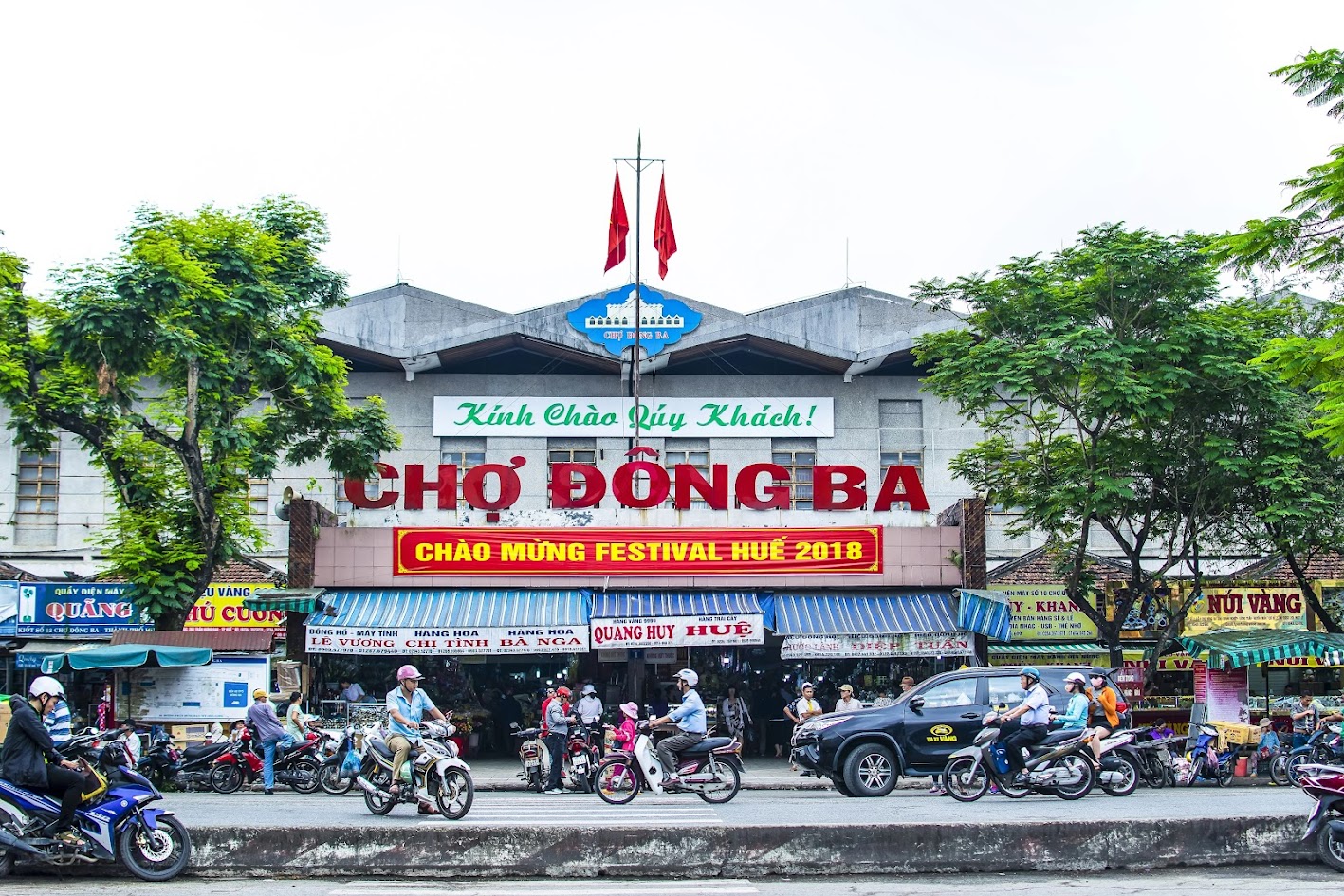
A food lover’s guide to Dong Ba Market
05 Sep, 2025
Dong Ba Market in Hue is the most famous traditional market in the ancient capital, with high cultural and historical value. Originally, the market was called Quy Giả Thị to mark the return of the Nguyen emperor to Phu Xuan. The name “Dong Ba Market” began to appear in 1887 during the reign of Emperor Dong Khanh. Currently, Dong Ba Market is located at No. 2 Tran Hung Dao Street, Phu Hoa, Hue City, right between Gia Hoi Bridge and Truong Tien Bridge. Dong Ba Market is always bustling with people, selling all kinds of goods—from food to daily necessities. However, based on experience, it’s best to visit the market from around 3 PM onwards, when the weather is pleasant, cooler, and the crowd is manageable, allowing for a more comfortable exploration. The market is designed with a central three-story building called the “Bell Tower,” surrounded by rows of shops in a U-shape. Each floor has different types of products, divided into sections for easier navigation: 3rd Floor: This is where you enter first and immediately see shops selling fabrics and clothing, especially carefully selected fabrics for making traditional Ao Dai dresses. If you are looking for gifts for mothers or elder women, this is a great place to start. 2nd Floor: On the second floor, you’ll be dazzled by intricate handicrafts. Here you can find poetry hats (non bai tho), metalwork like incense burners and scissors, Phuoc Tich pottery, bamboo products, and many other souvenirs to take home as gifts. 1st Floor: The first floor features dried seafood from Central Vietnam and a variety of Hue specialty fermented sauces, such as “mam co Ri” and “mam nem.” The sellers are very friendly and provide detailed advice, so feel free to ask for recommendations and purchase a jar of sauce as a gift. What to Eat at Dong Ba Market? As the sun sets, stepping out of the Bell Tower, you’ll see rows of snack stalls surrounding the market. Here, you can enjoy many delicious Hue specialties such as bun nghe (turmeric noodle soup), banh trang Sia, Kim Long grilled pork noodles, Nam Pho thick noodles, banh khoai, shrimp cake in banana leaf, banh nam, steamed rice rolls, special red bean sweet soup, mixed sweet soups, and roasted pork sweet soup. Some notable dishes you should try include: Hue Grilled Pork Rolls (Nem Lui: Nem Lui is a specialty of Central Vietnam, with fragrant grilled pork served with rice paper and fresh vegetables. At Dong Ba Market, it’s best enjoyed at street-side stalls, costing about 50,000 VND per serving for two people. Beef Noodle Soup (Bun Bo): No trip to Hue is complete without tasting Bun Bo, a signature dish of the ancient capital. You can find it in every corner of Dong Ba Market, priced from 15,000–20,000 VND per bowl. Sour Shrimp Noodle Soup (Bun Tom Chua): Once considered a royal dish, it is now available at an affordable price of only 20,000 VND per bowl. A complete serving includes thinly sliced pork belly, fresh herbs, the distinct sourness of shrimp paste, and a light, flavorful broth. Hue Tapioca Dumplings (Banh Bot Loc): The Banh Bot Loc at Dong Ba Market is authentic and delicious, priced at 15,000–20,000 VND per generous serving—perfect for a filling afternoon snack. Hue Sweet Soups (Che Hue): When visiting Dong Ba Market, you must try Hue sweet soups. They serve both as desserts and refreshing drinks, perfect for summer. In addition to savory dishes, the market also offers Hue royal tea, known for its health benefits and suitable as a gift for parents, as well as snacks like sesame candy (me xung) and banana leaf-wrapped tapioca cakes, which are convenient to take home as gifts. Dong Ba Market captures the essence of Hue in every corner, offering visitors a chance to experience the city’s traditions up close. Strolling through the bustling aisles, you encounter not only colorful handicrafts and textiles but also the rich aromas and flavors of authentic local cuisine. Each visit reveals new stories—from the skill of local artisans to the hospitality of vendors and the vibrant life of the market itself.

Discover Hanoi’s authentic flavors at Dong Xuan Market
05 Sep, 2025
A Historical Gem of Hanoi Address: Đồng Xuân Market, 29 Hàng Chiếu Street, Hoàn Kiếm District, Hanoi, Vietnam. Opening Hours: Market: 6:00 AM – 6:00 PM daily. Food stalls: Typically busiest from 7:00 AM – 3:00 PM Established in the late 19th century, Dong Xuan Market has long been a central hub for commerce in Hanoi. Originally designed to accommodate local traders and villagers, it has grown into a sprawling market that attracts both locals and tourists. Its architecture—a combination of French colonial influence and traditional Vietnamese design—reflects the city’s rich history. Inside, the market remains a microcosm of Hanoi’s cultural diversity, with vendors from different regions selling specialties that tell the story of Vietnam’s culinary heritage. Culinary Delights Around Every Corner For food enthusiasts, Dong Xuan Market is nothing short of a paradise. The market is brimming with stalls offering fresh produce, fragrant herbs, spices, and traditional ingredients essential to Vietnamese cooking. The aroma of sizzling street food fills the air, enticing visitors to sample iconic dishes that have been perfected over generations. Some must-try items include: “Phở”: Vietnam’s world-famous noodle soup, often made from slow-cooked beef or chicken broth infused with star anise and other spices. “Bún chả”: Grilled pork served with vermicelli noodles, fresh herbs, and a tangy dipping sauce. “Bánh cuốn”: Delicate steamed rice rolls filled with minced pork and mushrooms, served with a side of fish sauce. “Nem chua”: Fermented pork rolls that offer a unique tangy and savory flavor. “Chè”: Traditional sweet soups made from beans, fruits, and coconut milk, perfect for a refreshing treat after exploring the market. Vendors often prepare dishes right in front of customers, offering a sensory experience that engages sight, smell, and taste. Sampling food directly from these bustling stalls provides a unique insight into Hanoi’s street food culture, which emphasizes freshness, balance, and harmony of flavors. Dong Xuan Market is also a window into the daily lives of Hanoi. Walking through its crowded alleys, visitors witness a lively tapestry of interactions: shopkeepers calling out their prices, families bargaining over textiles, and artisans selling handmade goods such as lanterns, ceramics, and traditional clothing. The market embodies a rhythm that has remained largely unchanged for decades, offering a glimpse into both Hanoi’s past and present. Many travelers enhance their visit with a hands-on cooking experience, sourcing ingredients directly from the market to prepare traditional dishes under the guidance of local chefs. This immersive approach allows visitors to not only taste Hanoi’s flavors but also understand the stories, traditions, and techniques behind each dish. Tips for Exploring Dong Xuan Market Arrive early: Morning visits ensure access to the freshest ingredients and avoid the busiest crowds. Carry cash: While mobile payments are increasingly popular, most small vendors prefer cash transactions. Engage with vendors: Ask questions, request recommendations, and embrace the chance to connect with locals. Be adventurous: Try dishes you’ve never heard of—some of the market’s hidden gems are tucked away in small corners. Dress comfortably: The market is expansive, and a lot of walking is required to explore it fully. Learn a few Vietnamese phrases: Simple greetings or numbers can go a long way in creating a warm interaction with vendors. Visiting Dong Xuan Market is more than a culinary adventure; it is a cultural immersion. Every corner tells a story—whether it’s the elderly vendor selling hand-rolled rice paper, the young chef skillfully grilling pork for bún chả, or the fragrant bouquets of herbs carefully arranged for sale. These moments give travelers a true sense of Hanoi’s daily life, its people, and its enduring traditions. For international visitors, the market offers an unparalleled opportunity to connect with the city on a deeper level. It’s a place where food becomes a bridge between cultures, where every bite carries the flavor of history, and where the bustling energy of Hanoi can be felt in every corner
Experiences & Activities

Nha Trang Half-Day Snorkeling Adventure with BBQ Onboard
1 day
Relax at Vung Tau Beach Visit Christ the King Statue Explore Whale Temple (Den Ca Ong) Discover the historic White Palace (Bach Dinh) Admire the panoramic sea view at Nghinh Phong Cape

A romantic & adventurous Vietnam journey in 10 days 9 nights
10 days 9 nights
Embark on a captivating 10-day odyssey through Vietnam, perfectly curated for couples seeking both profound cultural immersion and exhilarating adventure. This journey weaves together the ancient charm of Hanoi with the mystical karst landscapes of Halong Bay, offering an overnight cruise under a starlit sky. Discover the imperial grandeur of Hue and the timeless allure of Hoi An, where lantern-lit nights and riverside tranquility set the scene for romance. Venture into the vibrant Mekong Delta, exploring its floating markets and lush waterways. Throughout your trip, you'll experience Vietnam's diverse beauty, from serene sunrises to thrilling activities, creating cherished memories that celebrate your love amidst breathtaking backdrops. This is more than a tour; it's a shared adventure into the heart and soul of Vietnam.

5D4N_HANOI – HALONG ON CRUISE EXPLORATION
5 days 4 nights
Spend 2 days cruising around Halong Bay, Lan Ha Bay or Bai Tu Long Bay. Highlights include Sung Sot Cave and Titop Island for Halong, Cat Ba Island and Dark and Bright Cave for Lan Ha, and Thien Cahn Son Cave and Vung Vien Floating Village for Bai Tu Long. Tour includes accommodation at different luxury levels, meals, activities and round-trip transfers from Hanoi. Overnight cruise around Halong, Lan Ha or Bai Tu Long bay Stay in an air-conditioned cabin with private bathroom Boats and accommodations range from three to five stars Activities can include kayaking, bamboo boat, cooking and tai chi

Highlight North Vietnam 7 days adventure
7 days 6 nights
Are you looking for a destination that’s equal parts adventure, culture, and jaw-dropping scenery? Immerse yourself in breathtaking landscapes, rich history, and culinary delights by getting ready for an unforgettable journey through Highlight North Vietnam 7-Day Adventure. From Hanoi’s bustling streets, the misty town of Sapa to Ninh Binh’s ancient land and natural wonder of Halong bay. This 7-day itinerary is crafted for those seeking adventure, culture, and relaxation. Dive into local experiences, scenic landscapes, and heart of Vietnamese culture!
![[S.I.C] Yen Duc village overnight: 2 day 1 night](https://ilooca-tourdb.itourism.vn//files/thumb/408/285/uploads/content/Yen-Duc-Village-Vietnamese-Local-Life_9_2017_03-770x513_1.jpg)
[S.I.C] Yen Duc village overnight: 2 day 1 night
2 days 1 night
This 2 day 1 night trip includes a nice stay in Viet House, unique village retreat accommodation, surrounded by rice fields in Yen Duc village. Cycling to discover peaceful village, talking with local people and visit their family house should amaze you with lots of cultural sense and fun. Besides that, joining local activities (fishing, gardening, visiting the culture house of village, local market…) bring you close to real experience of a farmers, taste delicious homemade Vietnamese food then enjoy peaceful life in countryside of Vietnam.

The perfect 3-day Sapa itinerary for first-timers
3 days 2 nights
Prepare to be captivated by a journey where mist-shrouded peaks meet vibrant cultural tapestries. This 3-day, 2-night escape from Hanoi plunges you into the heart of Sapa's unparalleled beauty. Imagine tracing the contours of iconic terraced rice fields, a masterpiece sculpted by generations, and breathing in the crisp mountain air. Beyond the breathtaking panoramas, you'll connect intimately with the resilient ethnic minorities – the H'Mong people – in their traditional villages, witnessing ancient customs and intricate handicrafts firsthand. For the ultimate perspective, an optional ascent to Fansipan, "The Roof of Indochina," offers a spectacular vista where clouds dance below your feet. This isn't just a tour; it's an immersive odyssey into the soul of Vietnam's highlands, promising memories that will linger long after you return.
Keep exploring
Top things to do in Food Markets
FAQs
